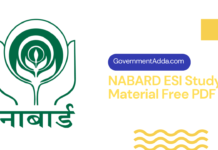Soil is a mixture of organic matter, minerals, gases, liquids, and organisms that together support life. The Earth’s body of soil is the pedosphere, which has four important functions:
- it is a medium for plant growth;
- it is a means of water storage,
- supply and purification;
- it is a modifier of Earth’s atmosphere; it is a habitat for organisms; all of which, in turn, modify the soil.
Soil science has two basic branches of study:
- Eaphology
- pedology.
Edaphology is concerned with the influence of soils on living things. Pedology is focused on the formation, description (morphology), and classification of soils in their natural environment.
The mineral material from which a soil forms is called parent material. Rock, whether its origin is igneous, sedimentary, or metamorphic, is the source of all soil mineral materials and the origin of all plant nutrients with the exceptions of nitrogen, hydrogen and carbon. As the parent material is chemically and physically weathered, transported, deposited and precipitated, it is transformed into a soil.
Typical soil parent mineral materials are:
- Quartz: SiO2
- Calcite: CaCO3
- Feldspar: KAlSi3O8
- Mica (biotite): K(Mg,Fe)3AlSi3O10(OH)2
Major classification of Indian soils
- Alluvial soil [43%]
- Red soil [18.5%]
- Black / regur soil [15%]
- Arid / desert soil
- Laterite soil
- Saline soil
- Peaty / marshy soil
- Forest soil
- Sub-mountain soil
- Snowfields
Alluvial soil:
- Mostly available soil in India (about 43%) which covers an area of 143 sq.km.
- Widespread in northern plains and river valleys.
- In peninsular-India, they are mostly found in deltas and estuaries.
- Humus, lime and organic matters are present.
- Highly fertile.
- Indus-Ganga-Brahmaputhra plain, Narmada-Tapi plain etc are examples.
- They are depositional soil – transported and deposited by rivers, streams etc.
- Sand content decreases from west to east of the country.
- New alluvium is termed as Khadar and old alluvium is termed as Bhangar.
- Colour: Light Grey to Ash Grey.
- Texture: Sandy to silty loam or clay.
- Rich in: potash
- Poor in: phosphorous.
- Wheat, rice, maize, sugarcane, pulses, oilseed etc are cultivated mainly.
Red soil:
- Seen mainly in low rainfall area.
- Also known as Omnibus group.
- Porous, friable structure.
- Absence of lime, kankar (impure calcium carbonate).
- Deficient in: lime, phosphate, manganese, nitrogen, humus and potash.
- Colour: Red because of Ferric oxide. The lower layer is reddish yellow or yellow.
- Texture: Sandy to clay and loamy.
- Wheat, cotton, pulses, tobacco, oilseeds, potato etc are cultivated.
Black soil / regur soil:
- Regur means cotton – best soil for cotton cultivation.
- Most of the Deccan is occupied by Black soil.
- Mature soil.
- High water retaining capacity.
- Swells and will become sticky when wet and shrink when dried.
- Self-ploughing is a characteristic of the black soil as it develops wide cracks when dried.
- Rich in: Iron, lime, calcium, potassium, aluminum and magnesium.
- Deficient in: Nitrogen, Phosphorous and organic matter.
- Colour: Deep black to light black.
- Texture: Clayey.
Laterite soil:
- Name from Latin word ‘Later’ which means Brick.
- Become so soft when wet and so hard when dried.
- In the areas of high temperature and high rainfall.
- Formed as a result of high leaching.
- Lime and silica will be leached away from the soil.
- Organic matters of the soil will be removed fast by the bacteria as it is high temperature and humus will be taken quickly by the trees and other plants. Thus, humus content is low.
- Rich in: Iron and Aluminum
- Deficient in: Nitrogen, Potash, Potassium, Lime, Humus
- Colour: Red colour due to iron oxide.
- Rice, Ragi, Sugarcane and Cashew nuts are cultivated mainly.
Desert / arid soil:
- Seen under Arid and Semi-Arid conditions.
- Deposited mainly by wind activities.
- High salt content.
- Lack of moisture and Humus.
- Kankar or Impure Calcium carbonate content is high which restricts the infiltration of water.
- Nitrogen is insufficient and Phosphate is normal.
- Texture: Sandy
- Colour: Red to Brown.
Peaty / marshy soil:
- Areas of heavy rainfall and high humidity.
- Growth of vegetation is very less.
- A large quantity of dead organic matter/humus which makes the soil alkaline.
- Heavy soil with black colour.
Forest soil:
- Regions of high rainfall.
- Humus content is less and thus the soil is acidic.
Mountain soil:
- In the mountain regions of the country.
- Immature soil with low humus and acidic.
| NABARD Grade A Assistant Manager 2018 Important Links | ||
| 1. | NABARD Assistant Manager Grade A 2018 Recruitment Notification Apply Online | Click Here |
| 2. | NABARD Grade A Officers Exam Syllabus 2018 – Prelims/Mains | Click Here |
| 3. | NABARD Grade A Officers Exam Pattern 2018 – Prelims/Mains | Click Here |
| 4. | NABARD Grade A Assistant Manager Previous Year Question Papers PDF – Download Here | Click Here |
| 5. | NABARD Grade A Previous Year Cut Off Marks | 2017, 2016, 2015 Cut Off Marks | Click Here |
| 6. | NABARD Grade A Assistant Manager Study Material | Books | ESI | ARD | English | GK Pdfs | Click Here |
| 7. | NABARD Grade A Assistant Manager ARD Agriculture and Rural Development PDF | Notes | Books | Click Here |
| 8.
9. 10. |
NABARD Grade A Assistant Manager Study Plan | How To Prepare For NABARD Grade A Officer Exam
NABARD ARD Study Plan & Preparation Tips and Tricks for Agriculture and Rural Development (ARD) NABARD ESI Study Plan & Preparation Tips and Tricks for Economic & Social Issues(ESI) |
Click Here |









